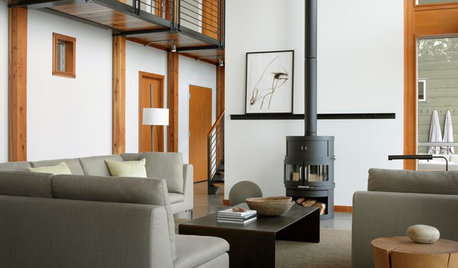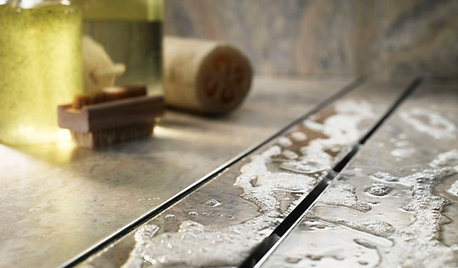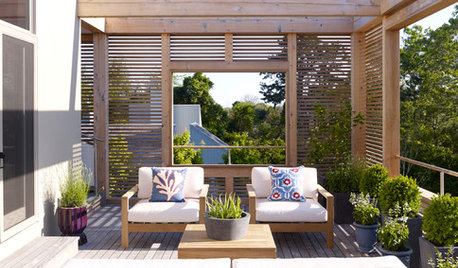We live in Asheville, NC in a 1200 SF1960's brick rancher. We have R26-R29 in the ceiling/attic. I am not sure if there is any insulation inside the exterior walls or not. The current duct work is metal. We have recently replaced all windows with low-e thermal pane windows. The old system is an oil furnace that is about 25 - 30 years old and is located in the crawl space under the house. We were told by the service technician that the heat exchanger is melted and that the furnace needs to be replaced. We do not have natural gas in the area so we would have to replace it with another oil furnace or a propane gas furnace.
We have gotten three quotes so far and feel like we are comparing apples to oranges, and are not really sure what option is best.
QUOTES FOR NEW FURNACE:
Company 1:
#1: $4400 using existing ductwork in same location
Bryant 915S Legacy Single Speed 80,000 btu LP furnace, Standard PSC Blower Motor, 95.5% afue, Legacy prg thermostat
#2 $5020 existing duct work in same location
Bryant 925T Preferred Two-Speed Boost ECM blower motor, 80,000 btu LP, 96.2% afue, Preferred prog thermostat
#3 $5440
Thermo Pride OD 85,000 btu oil furnace, 85.7% afue
-CO2 detector installed
#4 $5785
Thermo Pride OT 101,000 btu oil furnace, 78.2% afue
**I was also quoted an optional $700 to move unit closer to crawl space access door. Is this necessary?
** All the above quotes include 10 yrs parts, 2 yrs labor, & lifetime heat exchanger warranty and include permit fees, start up, removal of old furnace, and inspection
Company 2 (NATE & Trane Certified):
#1: $4,146.23 using existing duct work, in same location
-Trane XR95 Single Stage 1 or 2 pipe system direct drive blower (model #: TUH1B040A9241A)
-Maintenace (1 trip per yr + 15% discount on repairs)
-Honeywell Media Filter
-Install gas pipe to central location in crawl space
-condensate pump (up to 20 ft tubing)
-PVC vent 2-pipe side wall
-ductwork transition
-propane conversion kit
-county inspection
-remove/replace old furnace
-start up labor
-2nd man labor
Company 3 NATE & Trane Certified):
#1 $7868.00
-Trane XR95 60,000 btu, 95% afue (#TUH1B060A9361A) LP furnace
-prog thermostat (no brand or model listed)
-condensate drain materials
-new supply and return ductwork (to be placed in attic)
-duct blasting test
-removal and disposal of existing unit
-permit and final inspection
-1 year maintenance
**Ltd lifetime Trane heat exchanger warranty, 10 yr Trane parts warranty, 5 yr Trane extended labor warranty
QUESTIONS:
1. Would it be better to go with a propane furnace over replacing with another oil furnace? Which unit is the best one and which one will be the cheapest to run as far as monthly heating costs? Will a heat pump be a better option than either oil or propane for heating? Also do we really need a two speed blower?
2. Company 3 stated that the new gas furnace would not fit in the crawl space and would have to go in the attic and would require all new duct work, yet the other two contractors stated that a new oil or gas furnace could go back in the crawl space and hooked up to the existing ductwork.
Company 2 and 3 are both Trane certified and using Trane equipment, but quoted two different models of gas furnace and two different locations.
Any ideas why one Trane contractor would insist on new ductwork and moving the unit to the attic.
3. Which of the two Trane systems is better (TUH1B040A9241A or TUH1B060A9361A)? What is the difference between the two units?
4. Company 1 quoted 80,000 & 100,000 btu units and Company 3 quoted a 60,000 btu unit. That seems like a considerable difference. Why would it vary so much (All three contractors did heat load calculations).
The other option we were given was to install a heat pump with an electric strip emergency backup.
Our current electric system is a fuse box and would need to be upgraded to a 220 breaker box to install a heat pump. As part of the electrical upgrade the dead head would also have to be moved and installed together on a meter panel. We have received an estimate of appx. $2400 - $3000 for the electrical upgrade.
Our entire budget for the entire system including electrical is $11,000, but all the quotes we have received for a heat pump + electrical upgrade exceed that amount.
Both Trane contractors quoted us units that they stated qualify for 4-yr no financing through Nov 15th, 2014. They both stated that less expensive units would not qualify. We really want the no interest option since we would have to finance the system.
QUOTES:
Company 2 (air handler to be placed in crawl space below floor and ductwork replaced)
#1 $9193.85 + electrial
-Trane 15 SEER XR15 2 ton heat pump (4TWR5024G1000A)
-Multi Speed High efficiency 3-speed air handler (GAF20A36M31SA) (I think this is the XB Series with 36000 btu cooling)
-Trane 5KW Electric Strip - No Breaker - 1 stage for series 2 air handler
-Line set up 3/4 x 3/8 x 30 feet
-3H/2C Prog Thermostat with humidity control (TCONT803AS32DA)
-Maintenance (2 trips/year + 15% discount on repairs)
-Honeywell Media Filter
-Condensate Pump & 20' tubing
-9 replacement flex on existing supply
-1 replacement flex on existing return
-return plenum lined
-1 round metal duct per section
-supply plenum lined
-3" condenser pad
-County inspection & permit
-additional labor, second man
-HP2 outdoor unit without coil level 2
-labor start up
#2 $10,699.49 + electrical
-Trane XR17 2-stage 17 SEER 2 ton heat pump (4TWR7024A1000A)
-Trane 2.5 ton Series 7 Air Handler with Variable Speed R410A with comfort R enhanced mode option (TAM7A0B30H21SA) (I believe this is the Hyperion XL model with 30,000 btu cooling)
-5 KW Trane Electric Strip heater for series 7 & 8 air handlers without circuit breaker (BAYEVAC05LG1AA)
-3H/2C prog Thermostat with humidity control (TCONT803As32DA)
**everything else is the same as listed in quote #1
Company 3:
(Wants to put air handler in attic and replace all duct work and add new vents and return, as well as $200 additional to add attic access door)
#1 $13,178.00 (includes electrical upgrade in cost)
-Trane XR15 15 SEER 2.5 ton heat pump (4TWR5030G)
-Trane indoor air handler w/ R410a (GAM5BOB36)
-10KW auxiliary heat strip
-digital thermometer (no brand or model listed)
-outdoor concrete pad
-refrigerant line set
-condensate drain materials
-new supply and return flex ductwork to be placed in attic
-duct blasting test
-removal & disposal
-Permit & inspection
QUESTIONS:
1. Why is the tonnage different on the heat pump versus the air handler? One quoted a 2 ton heat pump and the other quoted a 2.5 ton heat pump. How do I know which one is the correct size? They both did a heat load calculation and are both Trane and NATE certified companies..
2. What is the difference between the multi-speed high efficiency blower and the variable speed air handler units. Also what is Comfort R enhanced mode option and is it something that is an additional expense or standard on Trane's variable speed handlers?
3. What is the recommended or best combinations of affordable heat pump and air handler together. I have heard that the TAM7 units leak a lot of air around the door and are inefficient because of that. Is this still an issue?
4. Company 2 also quoted only a 5KW aux heat strip versus 10KW quoted from company 3. Company 2 also noted "without circuit breaker" but we will have the electrical upgraded before we would install the heat pump. Did the salesman misunderstand or does that mean something entirely different? What is the difference between the 5KW and 10KW? How much do I actually need and what is the approximate price difference between them?
5. Is the Trane programmable thermostat (TCONT803 model) the best option? Is the humidity control something included on that model or is that an upgrade (ie:additional expense)? Do you have to get Trane's model or can you purchase a different model on your own and install it yourself?
6. Are maintenance plans optional (ie:added expense)? It is listed in the quote but I'm not sure that I want to pay extra for it.
7. Neither company will provide a line by line cost breakdown even after being asked, although company 3 did at least give me a general ballpark breakdown of his quote.
He stated that for the $13,178 quote:
$2400 was for the electrical upgrade
$3600 was for the ductwork (adding it in the attic)
$7178 was for the heat pump (and everything associated with it)
Do these prices seem reasonable or average based on the information provided?
8. Based on the information provided, does anyone see any items or inclusions that are an extra expense that could be removed or downgraded to reduce the overall expense so that we can fall within our $11,000 budget?
We still have two other companies coming to provide quotes as well, but I would like to be a little more informed so I know what questions to ask and so I can be comparing apples to apples and possibly get quotes on the same system if possible.
9. Should I call the companies back and get them to quote the same system as the other contractor so I can better compare?
Any assistance or advice would be greatly appreciated as this is a huge expense for us and we want to be budget conscious but also choose a good system that will last and be cost effective for us over the long-term as well as be inexpensive to run month to month.
Thanks,
Regina

















hvtech42
mike_home
Related Professionals
North Tustin Solar Energy Systems · Randolph Solar Energy Systems · South Whittier Solar Energy Systems · Campbell Home Automation & Home Media · Hacienda Heights Home Automation & Home Media · Naperville Home Automation & Home Media · Pine Hills Home Automation & Home Media · Pittsburgh Home Automation & Home Media · Pittsburgh Home Automation & Home Media · Plainview Home Automation & Home Media · Saint Petersburg Home Automation & Home Media · San Jose Home Automation & Home Media · Silver Spring Home Automation & Home Media · Dedham Electricians · Markham Electriciansweedmeister
tigerdunes